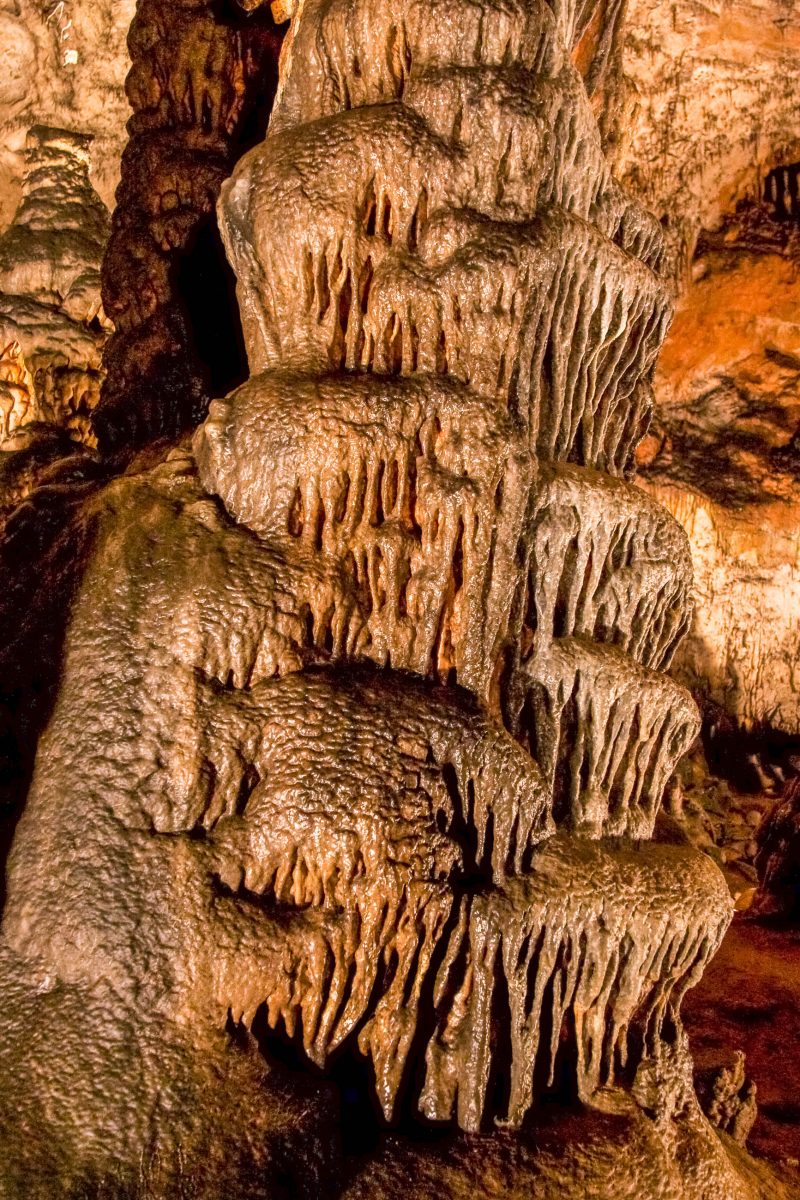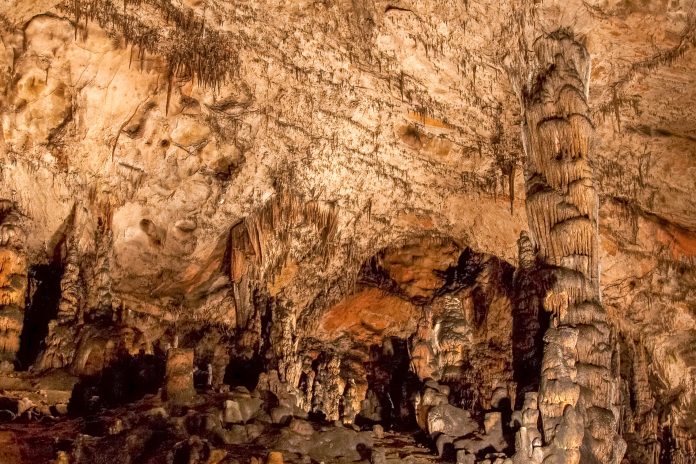Der Aggtelek Nationalpark befindet sich im Nordosten Ungarns und ist vor allem für Ungarns größtes und schönstes Tropfsteinhöhlensystem, die Baradla-Höhlen, bekannt. Darin befindet sich neben weiteren atemberaubenden Kalksteinformationen der höchste Stalagmit der Welt.
Der Aggtelek Nationalpark befindet sich im Nordosten Ungarns und zählt mit seinem atemberaubenden Tropfsteinhöhlensystem zu unseren Top 10 Sehenswürdigkeiten von Ungarn. Er wurde 1985 zum Schutz der einzigartigen Oberflächenformen und Höhlen gegründet und gilt seit 1995 als Weltkulturerbe der UNESCO.
Die Oberfläche des Nationalparks umfasst eine Fläche von 20.000 Hektar und besteht zu 75% aus saftigen Laubwäldern, die immer wieder von Lichtungen, Rasenflächen und Felsvorsprüngen durchbrochen werden. In Aggteleker Nationalpark gedeihen seltene Pflanzen, die einer Vielzahl an Insekten und über 200 Vogelarten einen sicheren Lebensraum bieten.
Unterwegs im Aggteleker Nationalpark

Die eindrucksvolle Karstlandschaft kann auf ausgeschilderten Wanderwegen erforscht werden. Im Zuge der Wanderwege kann man sich nicht nur mit den zoologischen und geologischen Gegebenheiten des Aggteleker Nationalparks vertraut machen, sondern lernt auch die Bräuche und Kultur des dort ansässigen Volkes kennen.
Ein beliebter Spazierpfad ist der 7km lange Baradla-Lehrpfad, der Aggtelek und Jósvafô miteinander verbindet und ca. 3 Stunden Zeit in Anspruch nimmt.
Der Tohonya-Kuriszlán-Weg führt um Jósvafô herum und dauert etwa 6 Stunden.
Die 7km zwischen Aggtelek und Jósvafô können jedoch auf noch spektakulärere Weise zurückgelegt werden. Unterhalb des einzigartigen Landschaftsmosaiks des Nationalparks verbergen sich an die 200 atemberaubende Tropfsteinhöhlen, die den Hauptanziehungspunkt für Besucher des Aggteleker Nationalparks darstellen. Gemeinsam mit der 5,6km langen Dominica-Höhle auf slowakischem Staatsgebiet befindet sich hier das größte Höhlensystem Mitteleuropas, von dem die Baradla-Höhle mit einer Gesamtlänge von 25km die längste Höhle ist.
Die Höhlen entstanden vor etwa 2 Millionen Jahren. Der Kalkstein, in den sie durch die unzählige Bäche und Flüsse gegraben wurden, ist ganze 230 Millionen Jahre alt. Im Lauf der Jahrtausende formierten sich aus dem tropfenden Kalkstein einzigartige Stalaktiten und Stalagmiten in den verschiedensten Formen, Größen und Farben. Archäologischen Funden zufolge wurde die Baradla-Höhle bereits vor 7.000 Jahren als menschliche Behausung genutzt. Tief im Inneren der Höhle wurden außerdem die Grabstätten von 9 Menschen gefunden.
Tipp: Unbedingt warm anziehen, auch wenn es im Hochsommer an die 30°C hat, kommt die Temperatur in der Höhle nicht über 10°C hinaus!
Besichtigung der Baradla-Höhle
Der Eingang zur atemberaubenden Welt aus Tropfsteinen erfolgt über den Ort Aggtelek, über Vöröstó („Roter See) oder über das Bergdorf Jósvafô. Von dort aus finden nach Voranmeldung fünf- und siebenstündige Führungen statt. In so manch unbeleuchteter Passage sind die Lampen der Besucher die einzige Lichtquelle im absoluten Schwarz.
Die Besucher wandern im Zuge dessen durch eine fantastische Stadt aus feuchtglänzendem Kalk, vorbei am mit knapp 33m höchsten Stalagmit der Welt und prachtvollen Kunstwerken mit klingenden Namen, wie Drachenkopf, Weihnachtsmann, Schildkröte, Tiger oder Schwiegermutterzunge, und durch gewaltige, bis zu 80m hohe Hallen, wie den Raum der Riesen, das Märchenland und die Halle der Säulen.
Im Konzertsaal, der nicht nur so heißt, sondern tatsächlich für Aufführungen genutzt wird, herrscht eine fantastische Akustik, die sich die unterhaltenden und klassischen Musikdarbietungen zunutze machen. Bei normalen Höhlenführungen wird der bemerkenswerte Klangkörper der Höhle durch Licht- und Musikspiele präsentiert.
Auch die Vass-Imre-Höhle kann besichtigt werden. Sie wurde nach dem erfolgreichsten Forscher des Höhlensystems benannt, der 1831 eine umfassende und künstlerische Karte der Höhle zeichnete. Die Béke-Höhle (Friedenshöhle) weist sogar eine noch höhere Konzentration an eindrucksvollen Kalksteinformationen auf. Sie verspricht aufgrund ihrer Vielzahl an prachtvollen Schimmelpilz-Gebilden Linderung bei Atemwegserkrankungen und ist deshalb auch als Heilhöhle bekannt.
Weiterführende Links:
Offizielle Seite des Aggtelek Nationalparks inkl. Tourbuchungen





